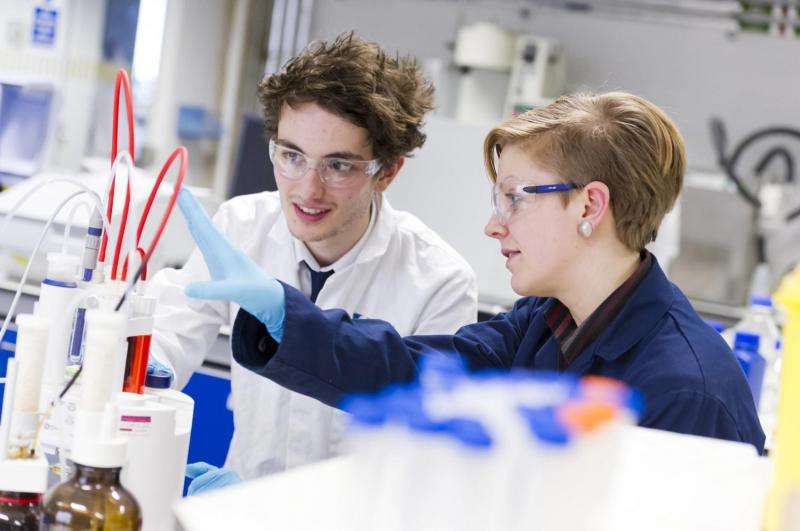How UEA research could help build computers from DNA

New research from the University of East Anglia could one day help build computers from DNA.
Scientists have found a way to 'switch' the structure of DNA using copper salts and EDTA (Ethylenediaminetetraacetic acid) - an agent commonly found in shampoo and other household products.
It was previously known that the structure of a piece of DNA could be changed using acid, which causes it to fold up into what is known as an 'i-motif'.
But new research published today in the journal Chemical Communications reveals that the structure can be switched a second time into a hair-pin structure using positively-charged copper (copper cations). This change can also be reversed using EDTA.
The applications for this discovery include nanotechnology - where DNA is used to make tiny machines, and in DNA-based computing - where computers are built from DNA rather than silicon.
It could also be used for detecting the presence of copper cations, which are highly toxic to fish and other aquatic organisms, in water.
Lead researcher Dr Zoë Waller, from UEA's school of Pharmacy, said: "Our research shows how the structure of our genetic material - DNA - can be changed and used in a way we didn't realise.
"A single switch was possible before - but we show for the first time how the structure can be switched twice.
"A potential application of this finding could be to create logic gates for DNA based computing. Logic gates are an elementary building block of digital circuits - used in computers and other electronic equipment. They are traditionally made using diodes or transistors which act as electronic switches.
"This research expands how DNA could be used as a switching mechanism for a logic gate in DNA-based computing or in nano-technology."
'Reversible DNA i-motif to hairpin switching induced by copper (ii) cations' is published in the journal Chemical Communications.
More information: Chemical Communications, pubs.rsc.org/en/content/articl … c05111h#!divAbstract
Journal information: Chemical Communications
Provided by University of East Anglia




















